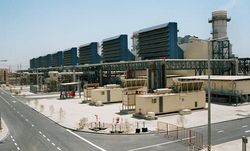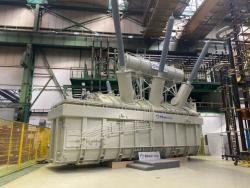
OR WAIT null SECS
© 2024 MJH Life Sciences™ and Turbomachinery Magazine. All rights reserved.
How centrifugal pumps respond to process requirements
Centrifugal pump component damage and causes as a function of
operating point[/caption]
Centrifugal pumps increase the pressure of the liquid by using rotating blades to increase the velocity of a liquid and then reduce the velocity of the liquid in the volute. A good analogy to this procedure is a football (soccer) game. When the ball (liquid molecule) is kicked, the leg (vane) increases its velocity. When the goal tender (volute), hopefully, catches the ball, its velocity is significantly reduced and the pressure in the ball (molecule) is increased. If an instant replay "freeze shot" picture is taken of the ball at this instant, the volume of the ball is reduced and the pressure is increased.
Centrifugal pump characteristics are: Variable flow; fixed differential pressure produced for a specific flow assuming specific gravity is constant; does not require a pressure limiting device; flow varies with differential pressure (P1-P2) and/or specific gravity. The flow rate of any centrifugal pump is affected by the process system.
The differential pressure required (proportional to head) by any process system is the result of the pressure & liquid level in the suction and discharge vessel and the system resistance (pressure drop) in the suction and discharge piping.
The differential pressure required by the process can be changed by adjusting a control valve in the discharge line. Any of the following process variables (P.V.) shown can be controlled: Level, pressure, flow. Changing the head required by the process (differential pressure divided by specific gravity), will change the flow rate of any centrifugal pump. All types of mechanical failures can occur based on where the pump is operating based on the process requirements.
Since greater than 95% of the pumps used in this refinery are centrifugal, their operating flow will be affected by the process. Centrifugal pump reliability and flow rate is affected by process system changes. Increased differential pressure (P2 — P1) means reduced flow rate and decreased differential pressure (P2 — P1) means increased flow rate for a centrifugal pump.
The centrifugal pump’s condition can be monitored through a reliability unit (RERU) for significant changes. Flow can be monitored by control valve position, motor amperes, and steam turbine valve position.
Since the flow rate will be determined by the process requirements, the power (BHP) required by the driver will also be affected. What would occur if an 8 ½" diameter impeller were used and the head (differential pressure) required by the process was low? Answer: Since the pressure differential required is low, the flow rate will increase and for the 8 ½” diameter impeller, the power required by the driver (BHP) will increase. Therefore, a motor can trip out on overload, a steam turbine's speed can reduce or a diesel engine can trip on high engine temperature.



